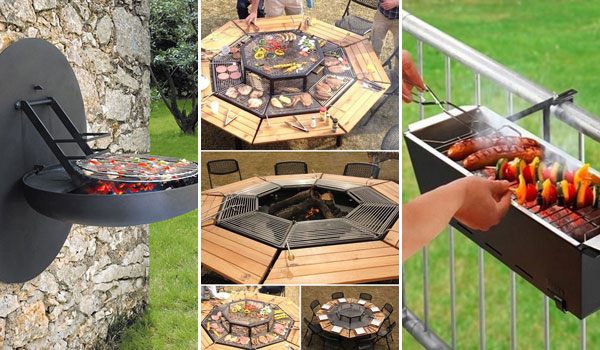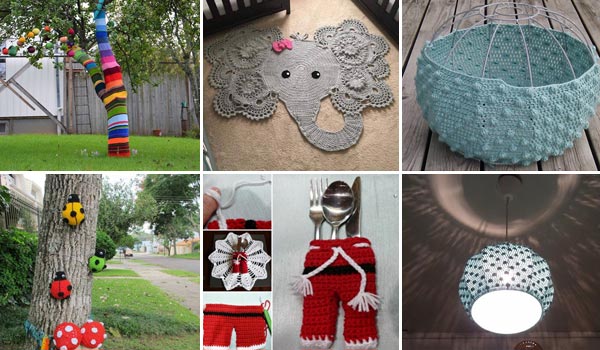10 Cool Ideas for Creating DIY Long Planters
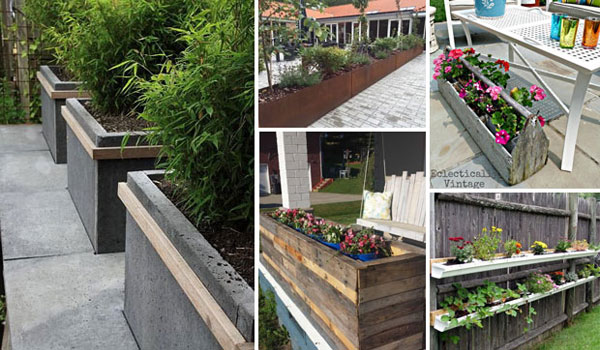
A planter is not only the house of your plants, but it is also a decoration itself. The special planters will be the perfect way to organize and show off your plants, such as the following long planters. They have larger space to let you plant so many of your favorite flowers and plants at once in a place. Compared with normal planters, they will produce a bold statement outside your home and will leave an impression on you and your visitors. Although a long planter is so unique, it can be created by yourself just as these low-budget DIY garden pots and containers. So if you like to display your plants in a different way, you could check these ideas:
1. Build a long planter from a cattle trough:
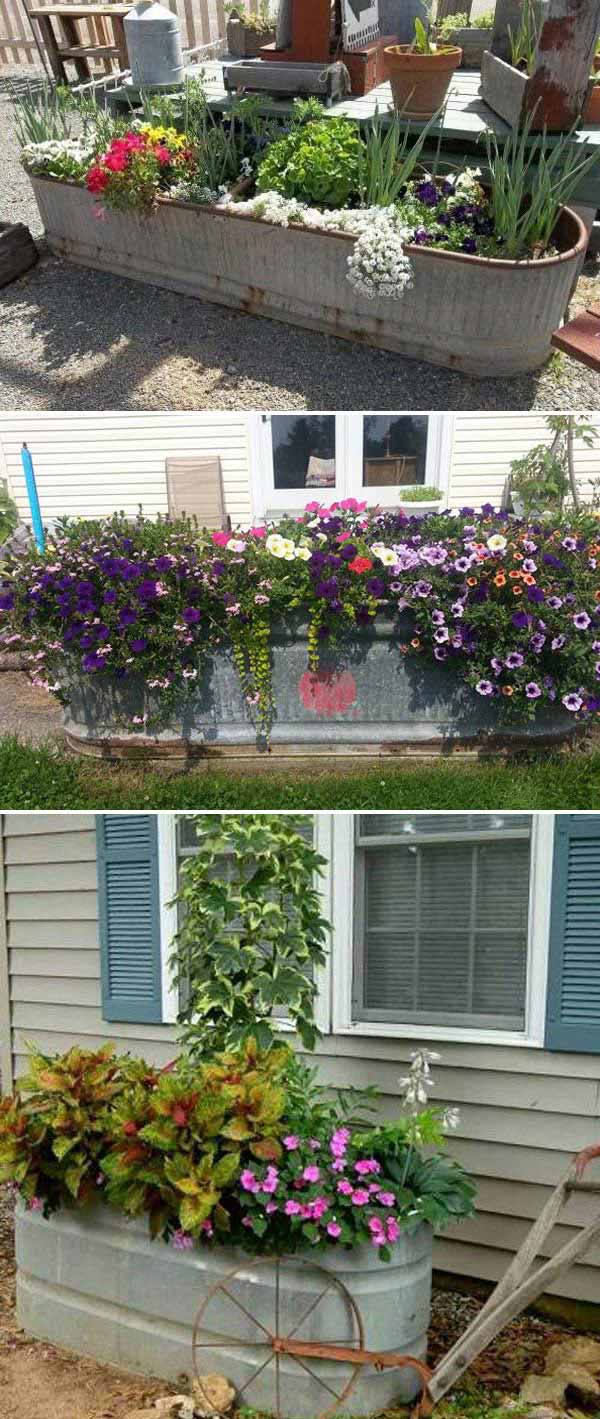
Tutorial: How to Make a DIY Trough Planter
DIY Trough Long Planter: A Step-by-Step Guide
Creating a DIY trough planter is a fun and easy project that adds a rustic charm to any garden or patio. Here’s how to make one from a galvanized water trough.
Start by gathering your tools and materials: you’ll need a galvanized water trough, a cordless drill, a 1/8″ cobalt drill bit, a six-foot level, landscape fabric, large gravel, topsoil, and slow-release fertilizer.
The first step is to create drainage holes. Using the cordless drill with the 1/8″ cobalt bit, drill about 10 holes around the perimeter and 10 in the bottom of the trough. This will ensure good drainage and prevent water from pooling, which can cause the plant roots to rot.
Next, set the trough in its final location. If you’re placing it in front of something like a playhouse, make sure the ground underneath is flat and level. A six-foot level will come in handy here to make sure everything is even.
To help with drainage, avoid filling the trough directly with soil. Instead, add a layer of large gravel to the bottom. This will cover the drainage holes and allow water to flow freely, preventing any clogging.
Once the gravel’s in place, you’ll want to stop soil from washing down into it. Lay a thick weed barrier fabric over the gravel, which will keep the soil in place while still allowing water to drain.
Now, it’s time to fill the trough with soil. Regular topsoil works great unless you need to use something special. Fill it to the top, leaving a little space for the plants. While you’re filling, sprinkle some slow-release fertilizer into the top third of the soil to promote healthy growth.
Finally, the fun part—planting! Choose a mix of flowers, preferably annuals, for vibrant blooms all summer long. Get the whole family involved in the planting process to make it a fun activity.
2. Steel planter boxes provides privacy and art:
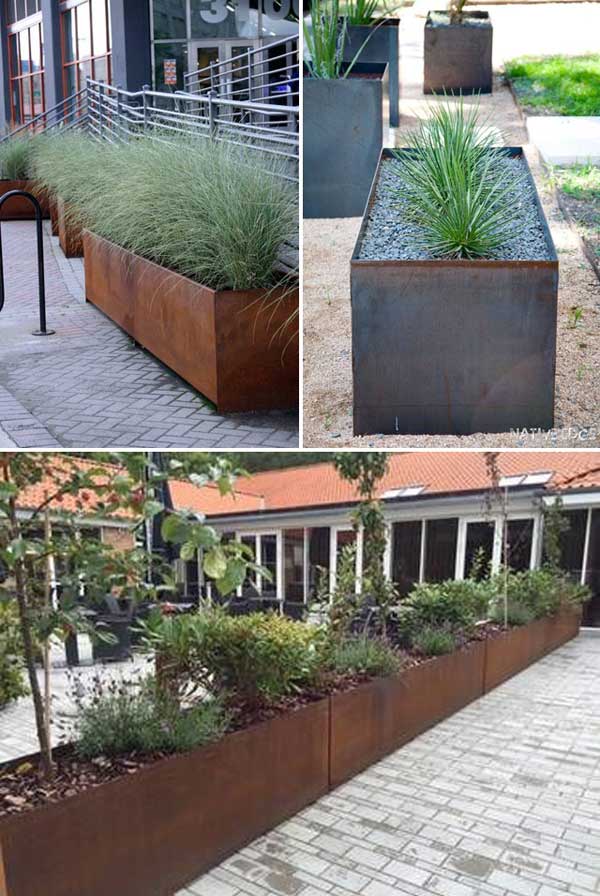
Via: planterworx.com
3. PVC pipes can be repurpsoed in different ways and thus turned into super cool planters in your patio:
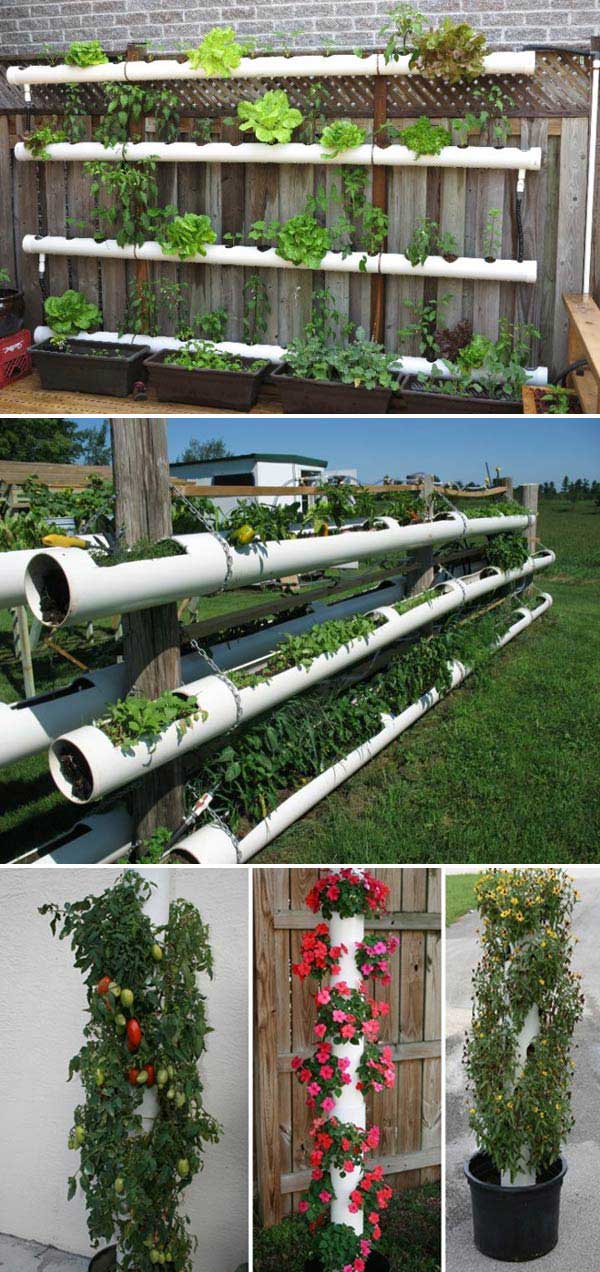
4. Recycle the old tool tote to make planter that will fit great in the rustic style in the patio:
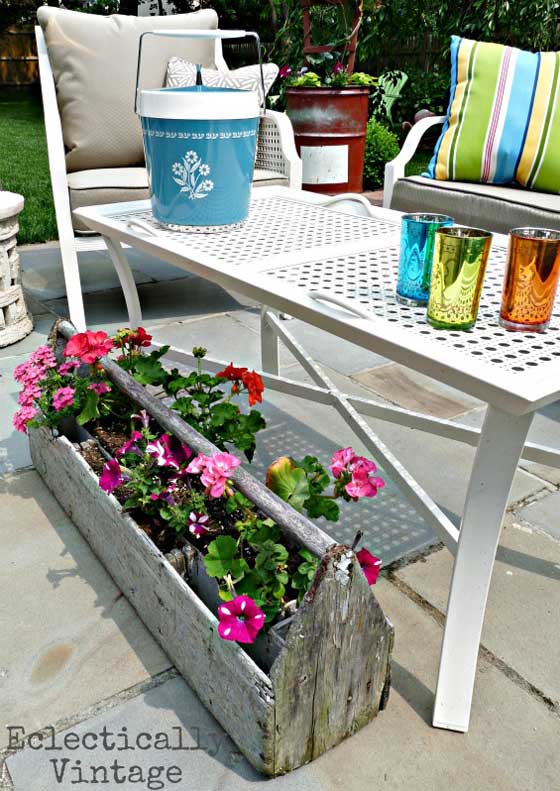
As the planting season approaches, it’s time to repurpose an old toolbox into a charming herb planter. This once tired, worn-out toolbox, with its rustic wood, had potential waiting to be unlocked. Instead of slapping on fresh paint, the goal was to enhance its natural look and embrace its vintage charm.
The first step was removing the rusty nails sticking out of the wood. Once that was done, a quick sanding smoothed out the rough edges. To give it a driftwood effect, the toolbox was whitewashed with homemade chalk paint. The trick was to water down the paint—this helped achieve a soft, weathered look without overpowering the natural wood. Working in small sections, the thin, watery mixture was brushed on and quickly wiped off with a paper towel, creating the perfect driftwood appearance.
Next, it was time to add a bit of design. Using a Cricut, stencils were cut from repositionable adhesive vinyl and applied to the toolbox with the help of transfer tape. A simple latex paint in a warm onyx color was used to stencil the design onto the wood, followed by a light sanding of the stenciled areas to distress them and add a bit of character.
To protect the finished look, two coats of Modern Masters exterior dead flat varnish were applied. This varnish dried clear, leaving a matte, rustic finish that maintained the natural appearance of the wood. With the toolbox protected, it was time to turn it into a planter. The inside was lined with landscaping cloth to prevent soil from leaking through the small gaps, and packing peanuts were added at the bottom for drainage. Fresh peppermint and chocolate mint were planted, and the transformation was complete.
This repurposed toolbox now serves as a lovely, rustic planter—perfect for any herb garden or patio setup!
Similar project: thenavagepatch.com
5. Reuse old wooden pallets to make a trough planter that can be a focus point of your patio:
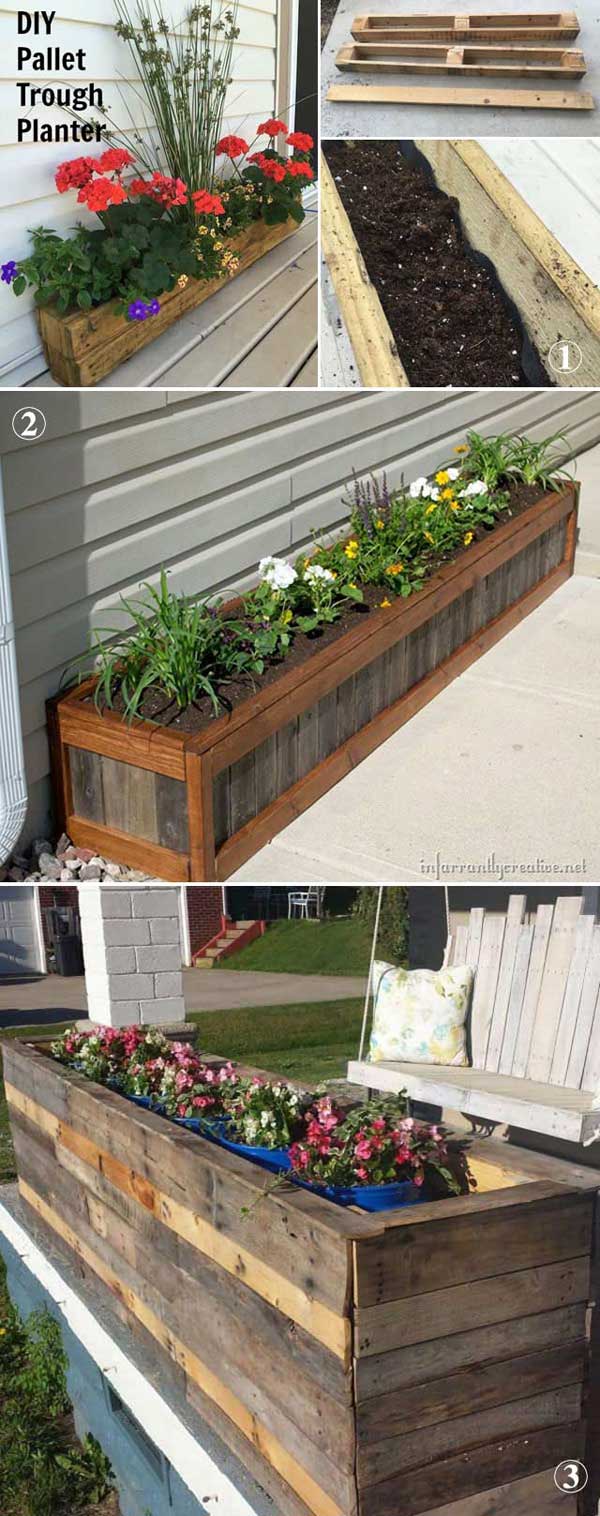
If you’ve got a small patio, you know how tricky it can be to fit large planters. That’s where this DIY Pallet Trough Planter comes in—it’s simple, quick to make, and fits perfectly in narrow spaces, like against a patio wall. You can easily put this together in an afternoon.
For this project, I grabbed an old pallet and cut off the two ends. I used one slat for the bottom and screwed everything together. A quick sand down to smooth the edges, then I gave it a light stain to finish off the rustic look. I wanted to keep the pallet feel, so I left a bit of the shipping ink font visible on the ends. It adds a little character and reminds me of its former life.
Once the structure was done, I lined the inside with landscape fabric to keep the soil in place, then filled it with ProMix Container Soil. For plants, I chose a mix of Proven Winners varieties—Juncus (Common Rush) for the center, Geraniums and Superbells Holy Moly for the middle, and Browallia Endless Illumination for the ends. It’s only about 4 feet long and 6 inches wide, making it the perfect fit for tight spots that could use a little greenery.
Tutorial at: sowanddipity.com & infarrantlycreative.net Image via: 1001pallets.com
6. Increase your home’s curb appeal and grow colorful flowers on a long window box:
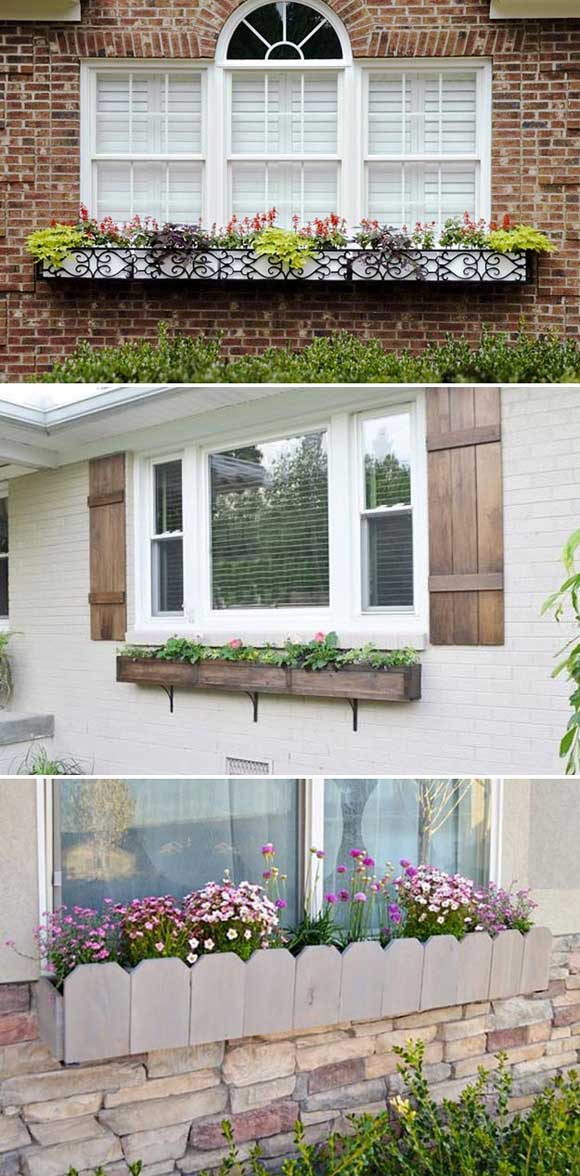
Image via: windowbox.com Tutorial at: Youtube.com
7. Dress up your wooden fence or walls using rain gutter planters:
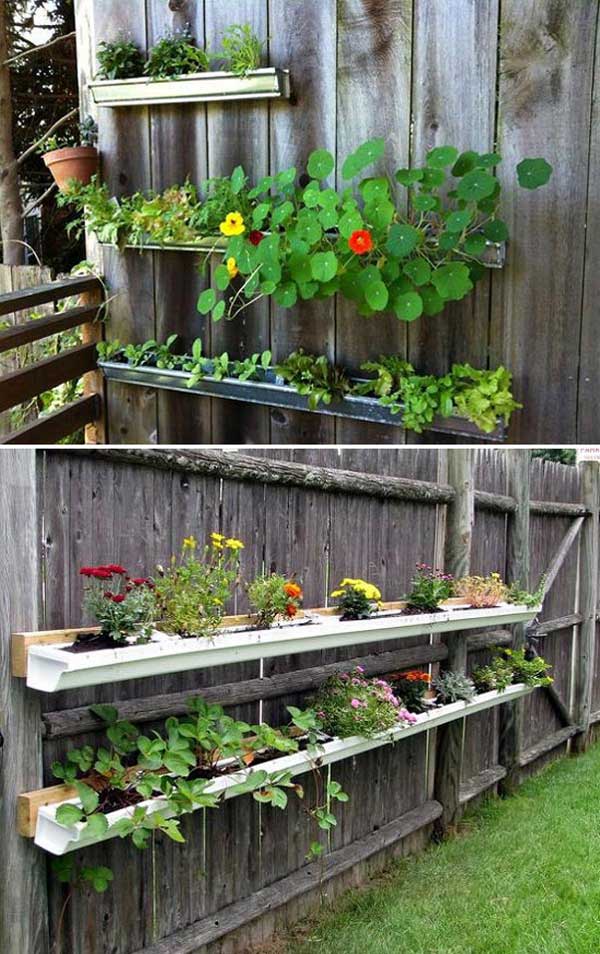
Tutorial at: instructables.com & paintedtherapy.blogspot.com
8. Create concrete planters:
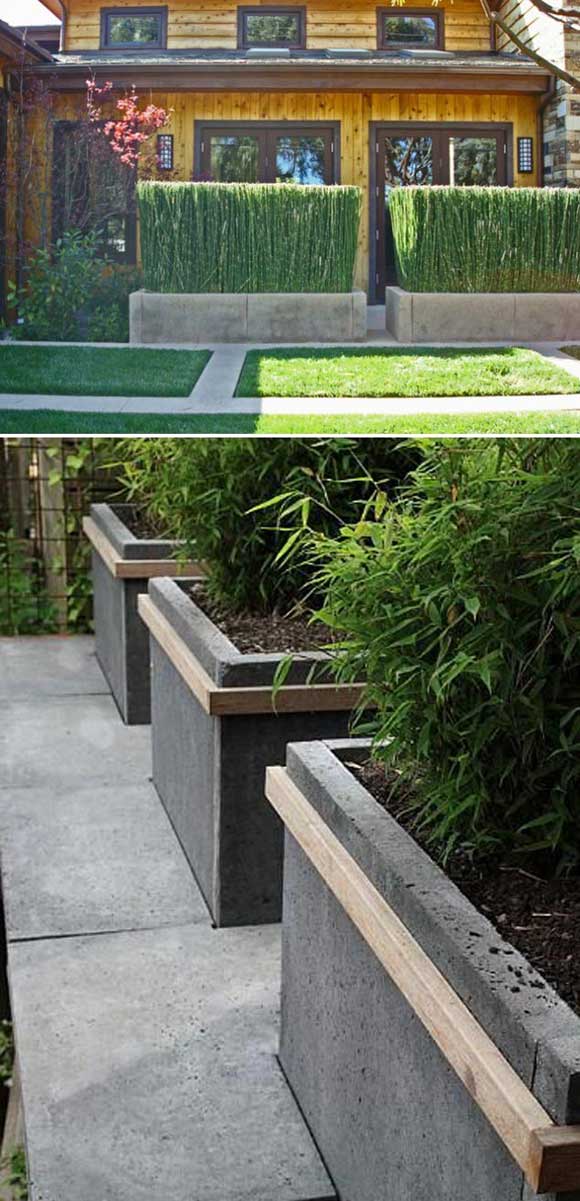
Image via: houzz.com & flickr.com
9. Turn a log into a long planter:
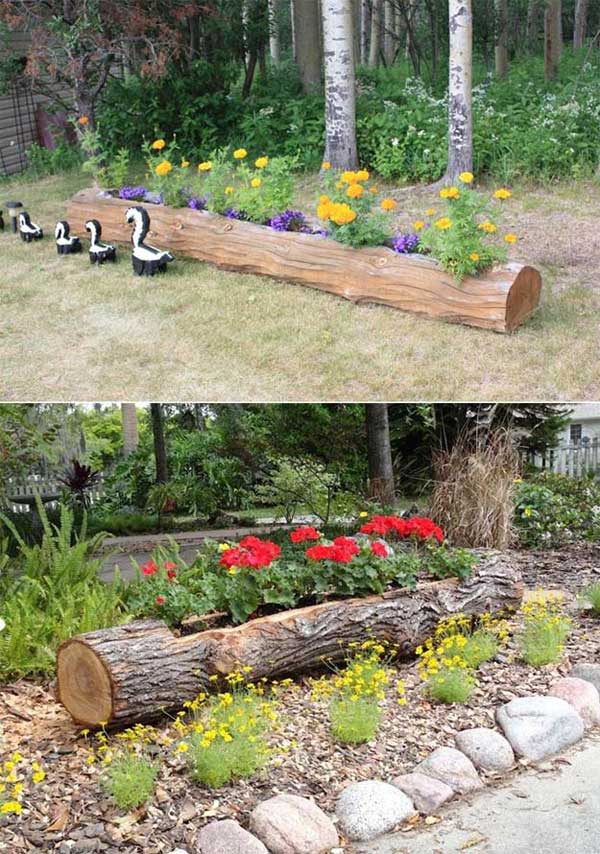
Image via: peacecountrygardens.com & tampahomebody.com
10. Repurpose a vintage chicken feeder for a new kind of gardening:
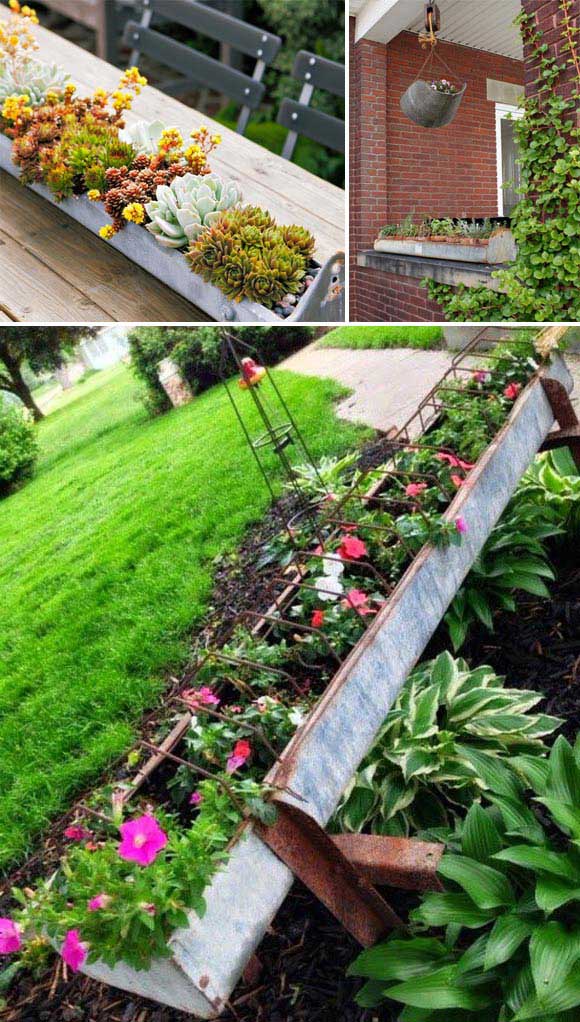
Image via: inspiredbycharm.com & sunset.com & minettesmaze.blogspot.com

